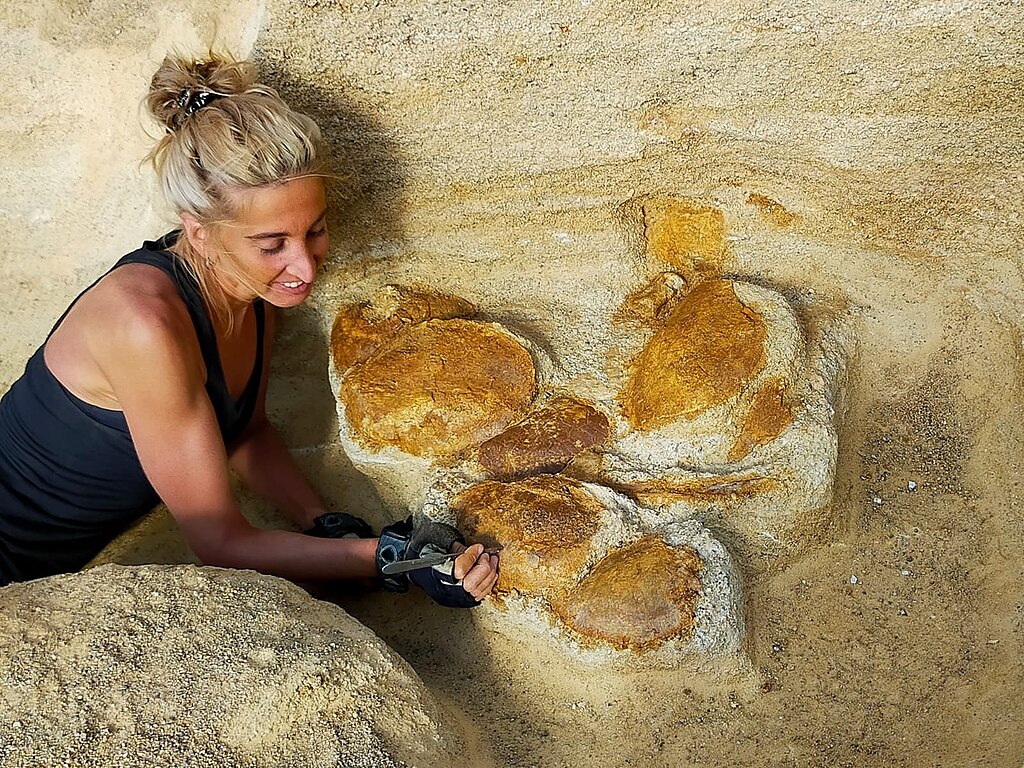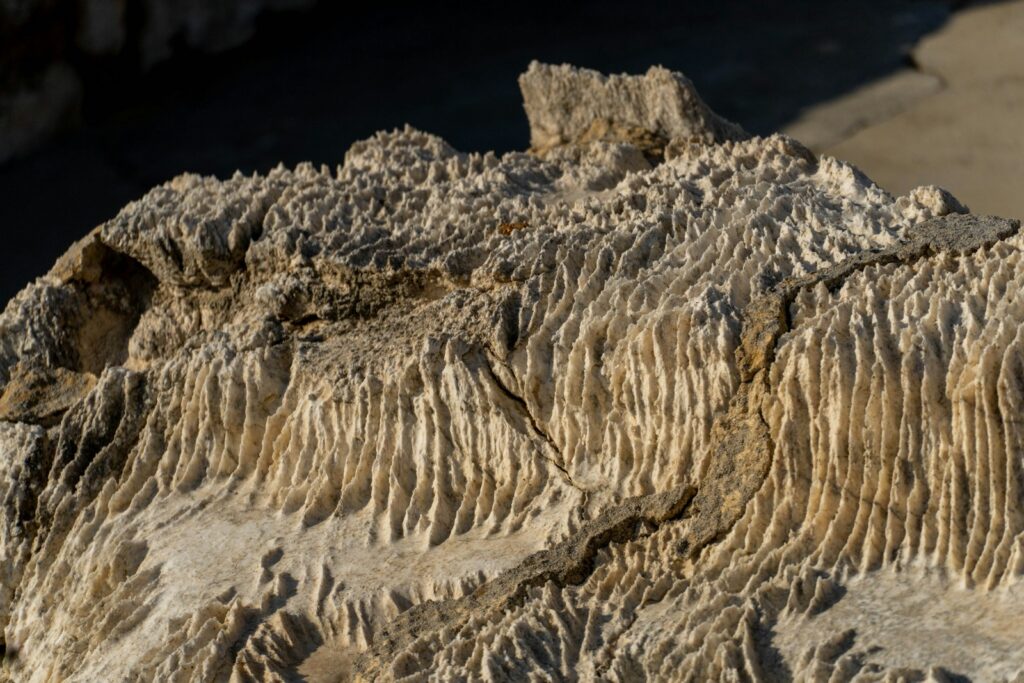In the popular imagination, dinosaurs often roam through lush tropical landscapes, but compelling evidence suggests these ancient creatures also thrived in Earth’s polar regions, including areas that experienced seasonal darkness and freezing temperatures. The discovery of fossils in what were once polar environments has revolutionized our understanding of dinosaur adaptability and distribution. This article explores the fascinating evidence for polar dinosaurs, examining how fossils formed under icy conditions provide unique insights into prehistoric polar ecosystems and the remarkable creatures that inhabited them.
The Unexpected Discovery of Polar Dinosaurs

The first significant polar dinosaur discoveries emerged in the 1960s when researchers found dinosaur remains in formations within the Arctic Circle in Alaska. These initial findings challenged the prevailing notion that dinosaurs were exclusively warm-weather creatures unable to survive in harsh environments. As exploration continued through the decades, scientists uncovered additional evidence in Antarctica, Australia (which was positioned much closer to the South Pole during the Mesozoic Era), and other high-latitude regions that once experienced extended periods of winter darkness and freezing conditions. These discoveries fundamentally transformed our understanding of dinosaur physiology and adaptability, suggesting these animals possessed remarkable biological mechanisms to thrive in environments we previously thought inhospitable to them. The polar dinosaur fossil record now includes numerous species across multiple dinosaur families, indicating this wasn’t a rare occurrence but rather a widespread adaptation.
Understanding Polar Environments During the Dinosaur Era
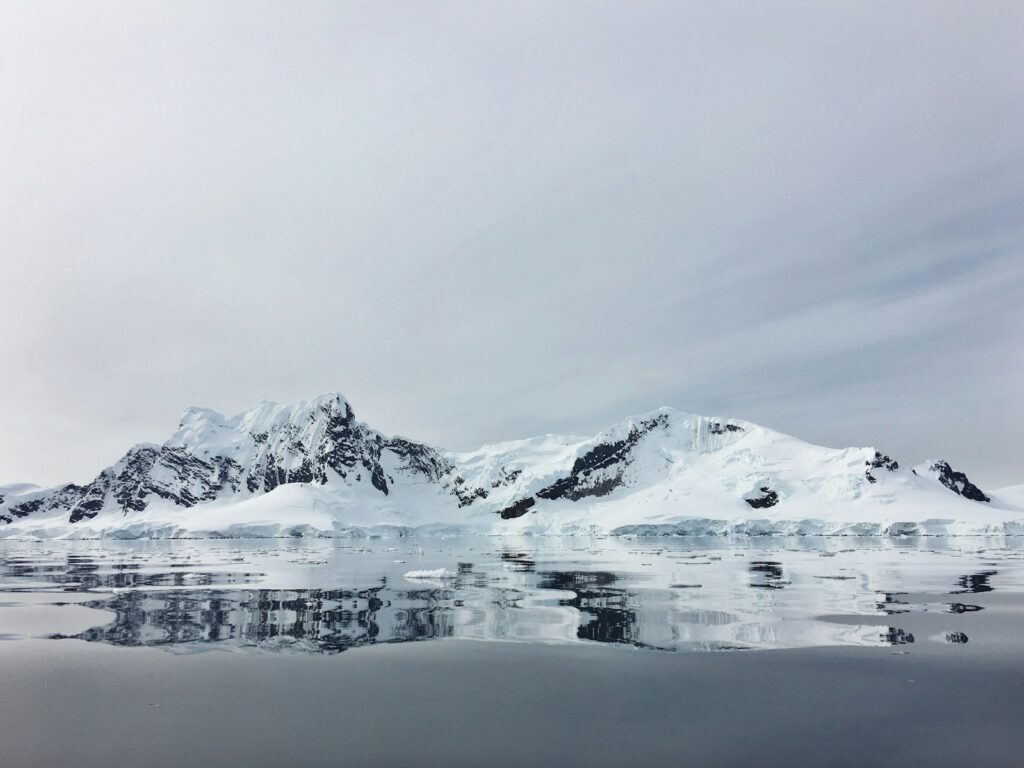
When dinosaurs roamed the Earth during the Mesozoic Era (252-66 million years ago), the planet’s climate differed significantly from today’s conditions. While polar regions were generally warmer than in our current era, they still experienced seasonal temperature fluctuations and periods of darkness. Geological evidence indicates that during parts of the Cretaceous period, polar regions experienced freezing temperatures with seasonal ice and snow, though not the permanent ice caps we see today. Fossilized plant remains found alongside polar dinosaur bones reveal forests of conifers, ginkgoes, and ferns that could survive the seasonal darkness. Crucially, even with a warmer global climate, these polar regions experienced months of continuous darkness during winter and continuous light during summer, creating environmental challenges unique to high latitudes. The climate evidence suggests these dinosaurs had to contend with genuine polar conditions, even if somewhat milder than today’s Arctic and Antarctic environments.
Key Fossil Sites in the Arctic Circle

The North Slope of Alaska has proven extraordinarily productive for polar dinosaur research, with the Colville River exposures revealing diverse dinosaur assemblages from the Late Cretaceous period. Here, paleontologists have uncovered thousands of fossils representing at least 13 different dinosaur types, including duck-billed hadrosaurs, horned ceratopsians, and predatory tyrannosaurs. Another significant Arctic site lies in the Lena River Basin of Siberia, where researchers have found well-preserved remains of lambeosaurine hadrosaurs with distinctive cranial crests. The Canadian Arctic Archipelago, particularly Axel Heiberg and Ellesmere Islands, has yielded important champsosaur and dinosaur fossils that lived at paleolatitudes above 75°N. The Prince Creek Formation in Alaska stands out for its exceptional preservation of juvenile dinosaur remains, suggesting these animals weren’t just seasonal visitors but permanent residents reproducing in polar environments. These discoveries consistently demonstrate that diverse dinosaur communities thrived at high northern latitudes during the Mesozoic Era.
Antarctic Dinosaur Discoveries

Antarctica has yielded fewer dinosaur fossils than the Arctic due to its extensive ice coverage and challenging research conditions, but the discoveries made there are scientifically significant. In 1986, researchers working on James Ross Island found the first Antarctic dinosaur, Antarctopelta oliveroi, an ankylosaur with distinctive armor plates and defensive spikes. Later expeditions to the Antarctic Peninsula uncovered remains of Glacialisaurus, a primitive sauropodomorph dinosaur that lived during the Early Jurassic period when Antarctica was still connected to other southern continents within Gondwana. Perhaps most notably, the discovery of Cryolophosaurus ellioti in the Transantarctic Mountains provided evidence of a large predatory dinosaur with a distinctive cranial crest that lived at high southern latitudes. These fossils were found in sedimentary layers indicating seasonal freezing conditions, supporting the hypothesis that these creatures could withstand the challenging polar environment. Despite logistical challenges, ongoing Antarctic research continues to reveal new information about dinosaur adaptation to extreme environments.
Australia’s Polar Dinosaurs: A Southern Hemisphere Perspective

During much of the Mesozoic Era, parts of Australia lay within the Antarctic Circle, experiencing pronounced seasonal darkness despite generally milder conditions than today’s polar regions. The Dinosaur Cove and Flat Rocks sites in Victoria, Australia, have yielded remarkable fossils of dinosaurs that lived at paleolatitudes of approximately 75° south, equivalent to parts of Antarctica today. These sites have produced remains of small ornithopod dinosaurs like Leaellynasaura amicagraphica, named for the daughter of the discovering paleontologists and noted for its unusually large optic lobes that may have helped it navigate the extended winter darkness. Another fascinating discovery from these polar deposits is Timimus hermani, a small theropod possibly adapted for the challenging seasonal conditions. The Victorian polar dinosaur assemblages are particularly notable for including numerous small-bodied species, suggesting potential adaptations to conserve heat in the cool polar environment. These Australian discoveries provide crucial evidence that dinosaurs not only survived but specialized for life in polar conditions in both hemispheres.
Fossil Formation in Cold Environments

The process of fossilization in polar regions involves unique conditions that differ from those in more temperate or tropical environments. In cold climates, decomposition occurs more slowly, potentially enhancing preservation of organic materials before mineralization can occur. Permafrost and seasonally frozen ground can create distinctive preservation conditions, sometimes maintaining soft tissues and other delicate structures rarely preserved in warmer environments. Sedimentary analysis of polar dinosaur sites frequently reveals evidence of freeze-thaw cycles, including frost wedges and cryoturbation features that indicate subfreezing temperatures during fossilization. The seasonal melt cycles in polar regions can create distinct layering in sediments, helping paleontologists identify annual patterns and potentially determine the season when an animal died. These distinctive taphonomic signatures (the processes affecting an organism after death) provide valuable environmental context for polar dinosaur fossils, confirming these animals truly lived and died in cold conditions rather than being transported from warmer regions.
Biological Adaptations for Polar Survival

Polar dinosaurs exhibit several adaptations that likely helped them survive in challenging high-latitude environments. Anatomical evidence suggests some species had enhanced visual systems, with enlarged optic lobes in the brain that may have improved their ability to navigate during the dim light of polar winters. Some polar dinosaur species show evidence of relatively large body sizes compared to their lower-latitude relatives, potentially following Bergmann’s rule—the biological principle that animals in colder climates tend to be larger to conserve heat more efficiently. Studies of bone microstructure in polar dinosaurs reveal distinctive growth patterns, with evidence of rapid summer growth alternating with periods of slowed or halted growth during the resource-scarce winter months. Perhaps most intriguingly, some polar dinosaur species show evidence of insulation, with structures interpreted as simple feathers or proto-feathers that would have provided crucial thermal regulation in cold environments. These adaptations collectively suggest dinosaurs weren’t merely surviving at high latitudes but had evolved specialized features for thriving there.
The Question of Migration vs. Year-Round Residence
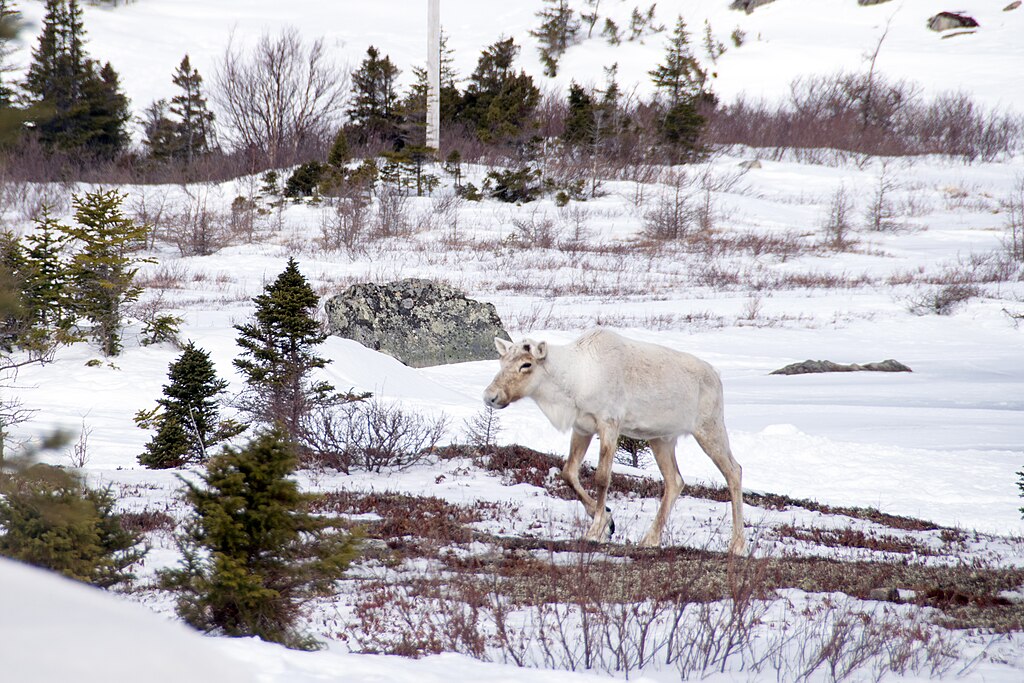
A central debate in polar dinosaur research concerns whether these animals migrated seasonally or remained in polar regions year-round. Evidence supporting year-round residence includes discoveries of hatchling and juvenile dinosaur fossils in polar formations, suggesting reproduction occurred locally rather than during migration to warmer areas. Growth ring analysis in fossil bones shows distinctive patterns consistent with animals experiencing the seasonal resource fluctuations characteristic of polar environments. The presence of dinosaur trackways in polar sediments from different seasons provides further evidence for year-round occupation. Complicating this picture, some polar dinosaur species show anatomical features that might facilitate long-distance movement, raising the possibility that certain populations could have migrated. Current scientific consensus suggests a mixed pattern, with some dinosaur species remaining in polar regions throughout the year while others potentially undertook seasonal migrations to avoid the harshest winter conditions. This complex behavioral pattern mirrors what we observe in modern Arctic animals like caribou, which have different migratory strategies within the same species.
Polar Dinosaur Ecosystems and Food Webs
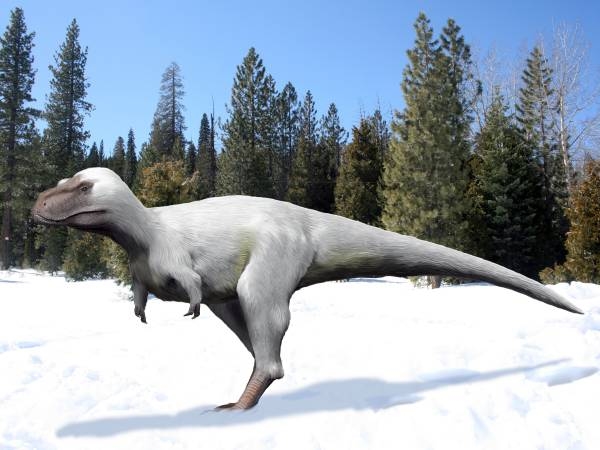
Fossil evidence reveals polar dinosaurs existed within complex ecosystems adapted to seasonal extremes. Plant fossils discovered alongside dinosaur remains indicate these environments supported forests dominated by conifers, ginkgoes, and ferns capable of surviving long periods of darkness through dormancy. These polar forests likely produced enormous quantities of vegetation during the continuous daylight of summer, creating a seasonal pulse of resources. Herbivorous dinosaurs, particularly hadrosaurs and ceratopsians in Late Cretaceous Arctic ecosystems, would have consumed this abundant plant material, potentially building fat reserves for winter. Predatory dinosaurs like Nanuqsaurus (a tyrannosaur from northern Alaska) occupied the top of these food webs, though potentially in lower numbers than their temperate counterparts. Smaller ecosystem members included mammals, amphibians, and a variety of reptiles, creating a surprisingly diverse community despite the challenging conditions. Interestingly, these polar ecosystems show high levels of endemism—species found nowhere else—suggesting they were not simply diluted versions of lower-latitude communities but unique assemblages adapted to polar conditions.
Controversies and Alternative Explanations
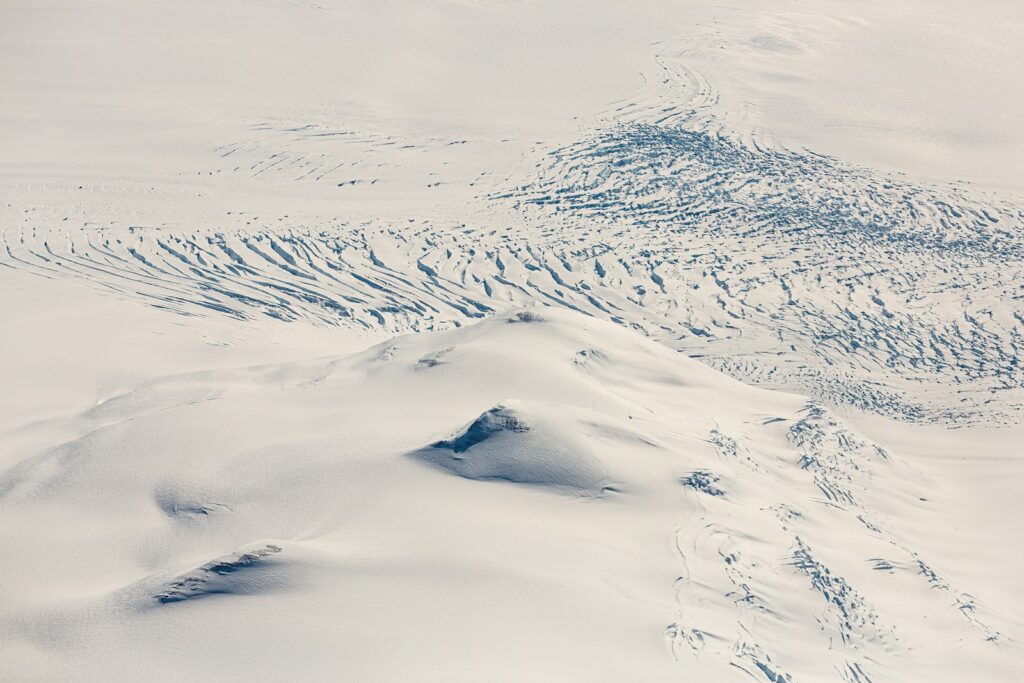
Despite compelling evidence for dinosaurs living in polar conditions, some researchers have proposed alternative explanations for these fossil assemblages. Some suggest that continental drift may have carried dinosaur remains to current polar positions long after the animals died in more temperate environments, though detailed stratigraphic analysis has largely disproven this hypothesis. Others propose that the Mesozoic polar regions were so much warmer than today that they presented no significant challenge to dinosaurs, effectively arguing these weren’t truly “polar” dinosaurs in an ecological sense. While Mesozoic poles were indeed warmer, geological evidence confirms these regions still experienced freezing conditions and months of darkness. A third controversy concerns the relationship between dinosaur physiology and polar survival, with ongoing debate about whether these animals were endothermic (warm-blooded), ectothermic (cold-blooded), or possessed an intermediate physiology. This physiological question remains active in research, with polar dinosaur evidence increasingly supporting at least partial endothermy. These scientific controversies highlight how polar dinosaur research continues to refine our understanding of prehistoric ecology.
Modern Research Techniques in Polar Paleontology

Scientists studying polar dinosaurs employ sophisticated techniques to extract maximum information from these remarkable fossils. Computed tomography (CT) scanning allows researchers to examine internal structures of polar dinosaur fossils without damaging specimens, revealing details about brain cavities, sinuses, and other features that may indicate cold-weather adaptations. Isotope analysis of fossil bones and teeth provides insights into dinosaur diet, migration patterns, and body temperatures by examining the ratio of elements like oxygen, carbon, and strontium. Histology—the microscopic study of bone structure—reveals growth patterns that can indicate how polar dinosaurs responded physiologically to seasonal changes in their environment. Advanced paleobotanical analysis of associated plant fossils helps reconstruct the ecosystems these animals inhabited, while sedimentological studies of the surrounding rock matrix provide crucial environmental context. Paleontologists also increasingly employ climate modeling to understand Mesozoic polar conditions more precisely, creating sophisticated computer simulations based on geological data. These multidisciplinary approaches collectively strengthen the evidence for genuine polar adaptations in dinosaurs.
Implications for Understanding Dinosaur Physiology

The existence of polar dinosaurs has profound implications for our understanding of dinosaur biology, particularly regarding metabolism and temperature regulation. The ability to survive in environments with freezing temperatures and months of darkness strongly suggests at least some dinosaur lineages possessed elevated metabolic rates more similar to modern birds and mammals than to reptiles. Bone histology of polar dinosaurs reveals rapid growth rates consistent with high-energy metabolisms rather than the slower growth typical of ectothermic animals. The discovery of insulating structures resembling primitive feathers or filaments on some polar dinosaur species provides further evidence for enhanced temperature regulation capabilities. The presence of dinosaurs at both poles challenges simplistic views of these animals as overgrown reptiles, instead suggesting a more complex and varied physiology across different dinosaur groups. Polar dinosaur evidence has become central to the ongoing scientific reassessment of dinosaur physiology, supporting the now-mainstream view that many dinosaur lineages possessed at least partial endothermy—a crucial adaptation that may have contributed to their evolutionary success across diverse environments worldwide.
Future Frontiers in Polar Dinosaur Research

Several promising research directions could further enhance our understanding of polar dinosaurs in coming years. Ongoing expeditions to little-explored regions of the Arctic and Antarctica continue to yield new fossil specimens, with vast areas still awaiting thorough paleontological investigation. Advances in ancient DNA recovery, though challenging with specimens of this age, might eventually provide genetic insights into cold-weather adaptations in polar dinosaur lineages. Increasingly sophisticated climate modeling offers opportunities to better understand the precise environmental conditions these animals faced, potentially resolving debates about the severity of Mesozoic polar environments. Comparative studies with modern polar animals, from birds to mammals, can provide useful analogies for understanding survival strategies in high-latitude environments. The application of emerging technologies like synchrotron radiation analysis allows unprecedented examination of fossil microstructure and composition, potentially revealing previously inaccessible details about polar dinosaur biology. As global warming increases access to previously ice-covered regions, particularly in the Arctic, new fossil exposures may become accessible, though this opportunity comes with significant environmental concerns. These future research directions promise to further illuminate how dinosaurs conquered Earth’s most challenging environments.
Conclusion: Rewriting Dinosaur History

The discovery and study of polar dinosaurs have fundamentally transformed our understanding of these remarkable animals. Far from being restricted to warm tropical and temperate environments, dinosaurs successfully colonized high-latitude regions on both hemispheres, developing adaptations to survive seasonal darkness and freezing conditions. This expanded geographic range demonstrates extraordinary evolutionary versatility, challenging long-held assumptions about dinosaur physiology and behavior. The evidence for polar dinosaurs strengthens the connection between modern birds and their dinosaurian ancestors, as many of the adaptations that allowed dinosaurs to survive in polar regions—including elevated metabolism and insulation—are features shared with modern birds. As research continues, each new polar dinosaur discovery provides additional insights into how these animals lived at the extremes of their range, offering a more complete picture of dinosaur evolution and ecology. The story of polar dinosaurs reminds us that life’s adaptability often exceeds our expectations, with important implications for understanding both prehistoric biodiversity and the capacity of animals to adapt to challenging environments.


